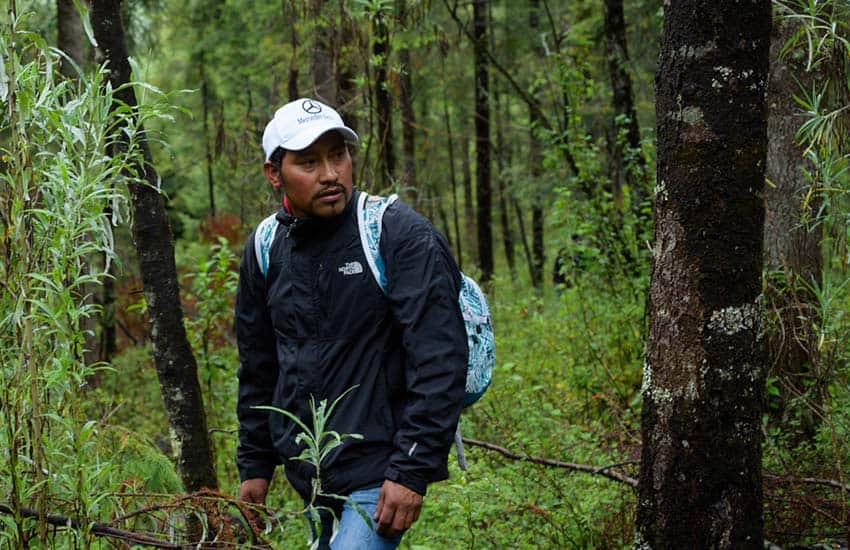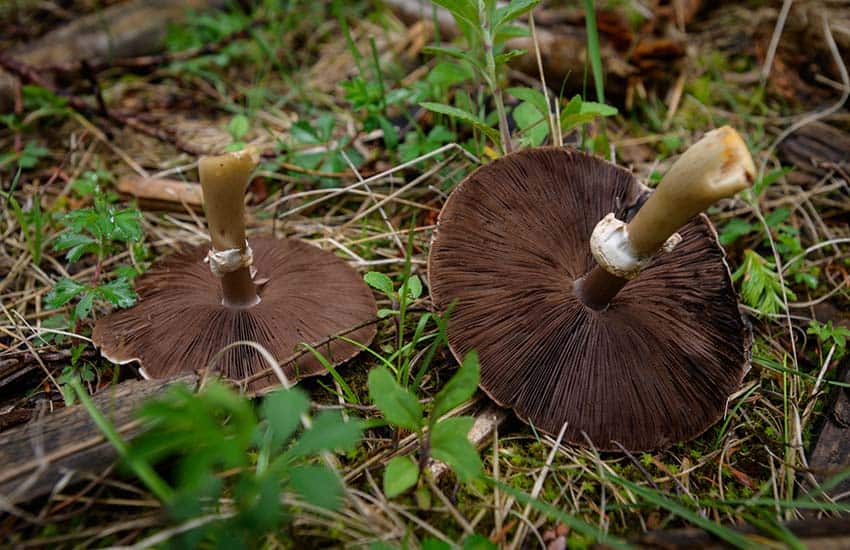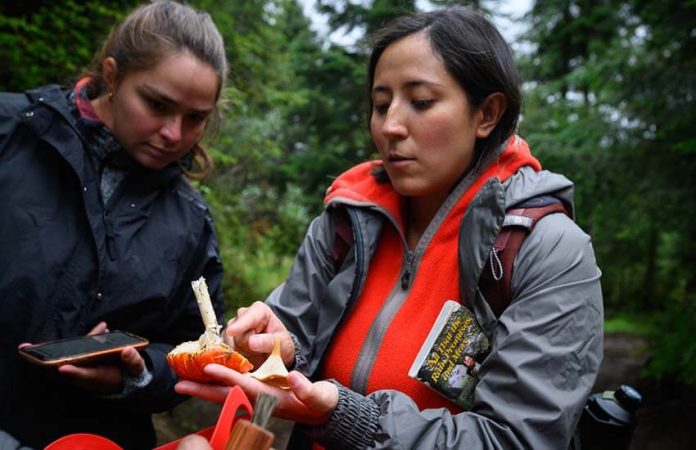“[It’s] part of the teachings of foraging,” says Nanae Watabe as she sits in an outdoor cafe in Mexico City’s Roma neighborhood, “realizing how long it takes to forage a kilo, the price you pay for that and the availability. When there’s mushrooms, there’s mushrooms. When there are no mushrooms, there are no mushrooms, no matter how much money you want to pay; it’s learning that this is what nature gave you this year and that’s what it is.”
Watabe has mushrooms on the brain. The rainy season is about to begin, and in a few weeks she will start to wake at dawn, pull on her rain boots and clomp her way through the forest just outside this seething metropolis, collecting one of the country’s most underappreciated culinary jewels.
Watabe is a mushroom hunter by trade, sought after by chefs and enthusiasts alike for her knowledge of the area’s fungi. She has spent close to a decade learning from local foragers in México state about where and how to collect some of the country’s finest mushrooms.
And while the wild fungi have boomed as a delicacy in the city and around the world, the work she does as a distributor to some of the capital’s most high-end restaurants hasn’t always been easy.
“Because of climate change, I had no mushrooms to sell,” she says of 2020. “Every chef was fighting over them, and there were no mushrooms — when at the beginning, when we all started this, I was moving maybe like 20 to 60 kilos per week. Then [the mushrooms] started being less and less [available], and I was like, ‘OK, I’m gonna stop. This is a sign that we are overdoing this.’”

She recognized that her particular part of the forest was being over-picked and not producing what it had in other years, so she pivoted. She started to take food lovers, chefs and mushroom junkies up to the forest to experience the hunt for themselves.
Watabe hoped it would teach them a deeper appreciation for the origin of their food and the vast fungi biodiversity in Mexico.
“I think your mind has never seen mushrooms in their natural habitat,” she told a recent group on a hunt in Xalatlaco, México state, in the La Mesita forest. “… To see a mushroom in the earth — I think it changes your life. Have you ever collected your own food? Strawberries don’t count. Your brain’s like ‘I’ve literally never seen this in my life.’”
At least that’s how she felt the first time.
Eight years ago, Watabe was working on a permaculture farm near La Mesita when a night watchman from the local community brought in a bucket “of things I had never seen in my life!” she laughs. “I was like ‘What is this?!’”
From that moment forward, she was hooked.
But foragers are secretive folks, and it took Watabe a while to convince that night watchman to take her out to the forest to look for fungi. Eventually, she found a more willing accomplice in Andrés Contreras.
From the same México state community, Contreras has been walking the woods almost from the time he could take a step. He spent the rainy seasons of his youth up on the hills with his father and brothers, grazing their sheep and hunting mushrooms. He’s now deeply involved in the project as Watabe’s local guide.
“All of a sudden, [Contreras’] family wanted to come to meet the group that wanted to meet their father — the official local guide and master, our teacher. For me, that is my favorite part,” Watabe says.
“By no means am I getting rich off this, but for me, it’s just so important to get connected to Andrés and his family up in the forest [and] to the chefs, being that bridge.”
Watabe studied food culture and communications in Italy, the epicenter of the slow food movement, and so her interests in developing a project with mushrooms went well beyond just eating.
“With slow food, you think about the environment, the social aspect and the pleasure aspect too, so I was thinking about that during this whole project.”

With that in mind, she is trying to keep the money from her tours inside the community. Local women make the green pork and mushroom tamales that tour participants eat mid-hike. Andrés’ wife makes the delicious quesadillas at the end of each tour under a white tent at the forest’s edge.
She also pays mushroom pickers their asking price and never haggles.
“Never try to lower the price if a lady is selling them to you,” Watabe says. “That lady probably went out to the forest and foraged those mushrooms with maybe two or three of her family members. That takes a whole day, and then they have to come and deliver to the market. So if that’s the price that they want to give to you, respect it because you have to respect the labor — because it’s a lot.”
After months off, Watabe is now slowly distributing again to a small number of select restaurants and is once again buying from a few suppliers in the city. You can find the mushrooms she distributes in restaurants like Felix, Meroma and Pujol, where she works with chefs who she feels value the process.
But her focus remains on the education of people about where their food comes from via the tours.
“[I want] people to really connect with part of Mexico, part of what we’ve had forever, and recognize that we have some of the best products worldwide — and also realize that this is only an hour away from the city, realize that it’s not just from a supermarket,” she said.
“People said to me, ‘Why don’t you have, like, 100 grams [of mushrooms] for people to take as a little gift [at the end of the tour], and I was like ‘No, no, no.’ That is the whole point of a food being seasonal. When it’s there and it’s fresh, that’s when it’s the best, and if you are lucky enough to find one and you’re lucky enough to be foraging, that’s the present that nature gives you,” she said.
If you are lucky enough to be foraging with Watabe, you soon learn that there are dozens of varieties of mushrooms out there, but only a few you can eat. That makes finding something edible and delicious even more exciting.
It also makes your appreciation for the people who do find them that much greater.
Lydia Carey is a regular contributor to Mexico News Daily.
